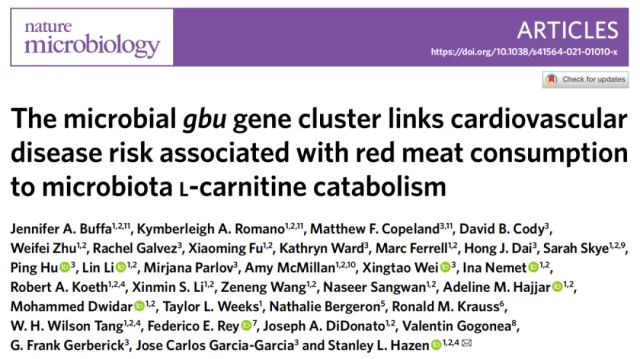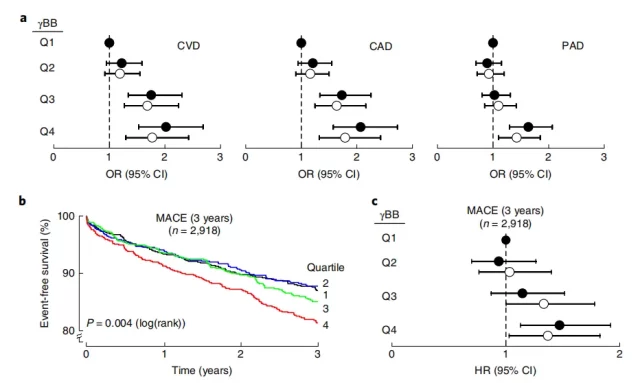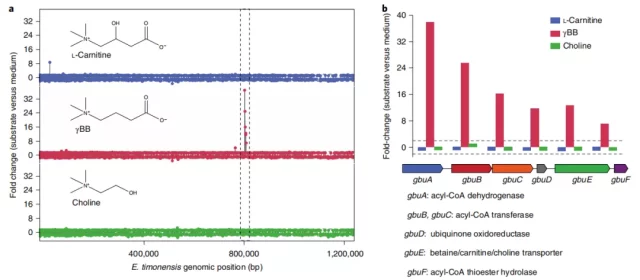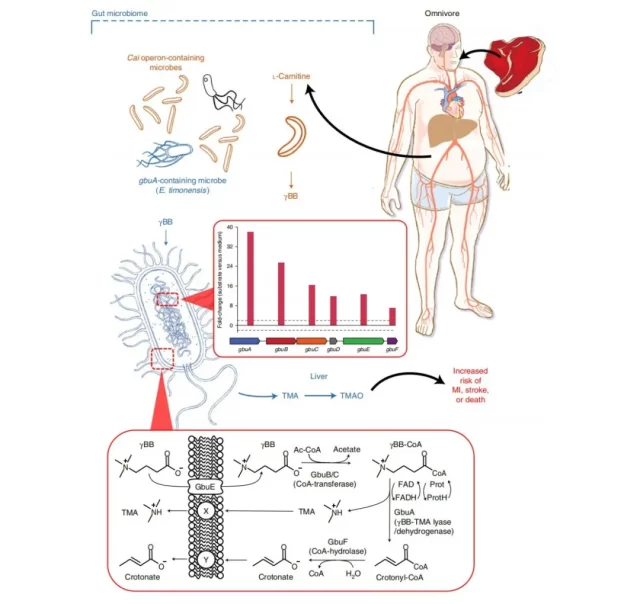The Specific mechanism of red meat increasing risks of cardiovascular disease
- Aspirin: Study Finds Greater Benefits for These Colorectal Cancer Patients
- Cancer Can Occur Without Genetic Mutations?
- Statins Lower Blood Lipids: How Long is a Course?
- Warning: Smartwatch Blood Sugar Measurement Deemed Dangerous
- Mifepristone: A Safe and Effective Abortion Option Amidst Controversy
- Asbestos Detected in Buildings Damaged in Ukraine: Analyzed by Japanese Company
New research reveals The Specific mechanism of red meat increasing risks of cardiovascular disease
- Red Yeast Rice Scare Grips Japan: Over 114 Hospitalized and 5 Deaths
- Long COVID Brain Fog: Blood-Brain Barrier Damage and Persistent Inflammation
- FDA has mandated a top-level black box warning for all marketed CAR-T therapies
- Can people with high blood pressure eat peanuts?
- What is the difference between dopamine and dobutamine?
- How long can the patient live after heart stent surgery?
The Specific mechanism of red meat increasing risks of cardiovascular disease.
Did you know that when you eat meat, cardiovascular and cerebrovascular diseases are quietly approaching you?
Many previous studies have found that eating red meat is associated with an increased risk of heart disease and death, and studies have shown that eating red meat is associated with an increased risk of cancer.
World Health Organization Cancer Research Agency in 2017 will be red meat included in Class 2A carcinogen list (which means the level is possibly carcinogenic to humans) .
Red meat is a nutritional term that refers to meat that appears red before cooking, such as pork, beef, lamb, venison, rabbit, etc. All mammalian meat is red meat.
December 23, 2021, researchers at the Cleveland Clinic in Nature sub-Journal Nature Microbiology delivered a research paper, entitled: The microbial gbu gene cluster links cardiovascular disease risk associated with red meat consumption to microbiota L-carnitine catabolism.
This study reveals how a diet rich in red meat can increase the risk of cardiovascular disease .
These findings are based on more than ten years of research by the lead author, Professor Stanley Hazen . In a series of landmark studies, Professor Hazen discovered that when intestinal microbes digest carnitine-rich foods (such as red meat and other animal products) , they produce a type of trimethylamine oxide (TMAO).
A by-product of it , it increases the risk of heart disease and stroke .
Today, this latest discovery provides a more comprehensive understanding of the two-step process by which gut microbes convert carnitine into atherosclerosis and blood clots after ingesting a diet rich in red meat.

Professor Stanley Hazen said these new studies have identified the gut microbial gene cluster, which is related to the second step, which links a diet rich in red meat with an increased risk of heart disease.
This discovery will help us find new treatment targets to prevent or reduce the risk of diet-related cardiovascular disease.

Professor Stanley Hazen
In 2018, a study published by Professor Stanley Hazen and his team in the Journal of Clinical Investigation showed that dietary carnitine is converted into trimethylamine oxide (TMAO) in the intestine through two steps involving gut microbes .
The intermediate metabolite in this process is a molecule called γBB (γ-butyl betaine) .

Professor Stanley Hazen said that a variety of gut microbes can convert carnitine in diets into γBB, but few microbes can convert molecules into TMA (the precursor of TMAO) . In omnivorous animals, the intestinal bacteria E. timonensis is the main human intestinal microbe involved in the conversion of γBB to TMA/TMAO.
In contrast, long-term vegetarians and vegans have very low levels of this microorganism in the intestines, so they have little ability to convert carnitine into TMAO.
The research team used samples and clinical data collected from nearly 3,000 patients to study the relationship between fasting plasma γBB levels and disease outcomes.
Higher γBB levels are associated with cardiovascular disease and major adverse events (including death, non-fatal heart attack or stroke) .

Elevated γBB levels are associated with an increased risk of cardiovascular disease in human subjects
To understand the mechanistic link between γBB and observed patient outcomes, the researchers studied stool samples collected from mice and patients, as well as preclinical models of arterial injury.
They found that the introduced gut bacteria E. timonensis completed the conversion of carnitine to TMAO, increased the level of TMAO, and increased the risk of blood clotting.
 Intestinal microorganisms convert carnitine into γBB, and then into TMAO
Intestinal microorganisms convert carnitine into γBB, and then into TMAO
Next, the researchers used sequencing technology to identify related gut microbial gene clusters.
According to the newly discovered function, the gene cluster is named gbu gene cluster, with a total of 6 genes. They found that in the presence of γBB, the expression of all 6 genes in the gbu gene cluster increased, and 4 of them (gbuA, gbuB, gbuC, and gbuE) were crucial in the transformation of γBB to TMA/TMAO.

The gbu gene cluster of E. timonensis is crucial for the transformation of γBB to TMA/TMAO
By studying patient samples, the research team found that the abundance of gbuA was significantly related to a diet rich in red meat and plasma TMAO levels, while vegetarians had lower gbuA levels.
This suggests that dietary adjustments may help reduce the risk of cardiovascular disease related to diet and TMAO .

Research Mode Diagram
In summary, this study found that when we eat carnitine-rich foods such as red meat, a variety of intestinal microbes can convert carnitine in the diet into γBB, and then a special intestinal bacteria E . timonensis increases the expression of the gbu gene cluster and converts γBB to trimethylamine oxide (TMAO) , thereby increasing the risk of cardiovascular disease.
Based on this principle, the role of gbu gene cluster is worthy of our further exploration, and may be used as a potential target for the prevention and treatment of cardiovascular diseases in the future.
Paper link :
https://www.nature.com/articles/s41564-021-01010-x
https://www.jci.org/articles/view/94601
The Specific mechanism of red meat increasing risks of cardiovascular disease
(source:internet, reference only)
Disclaimer of medicaltrend.org
Important Note: The information provided is for informational purposes only and should not be considered as medical advice.



